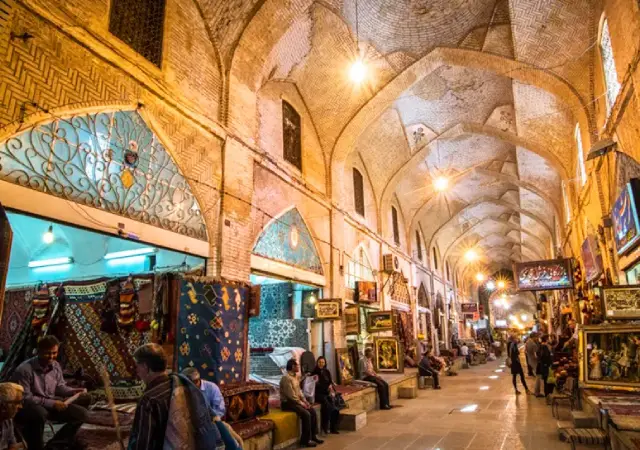
Bazaar Qazvin





Qazvin Bazaar
The bazaar holds a fundamental and essential role in every Iranian city. Markets are typically located in the city center and connect important parts of the city, such as baths, schools, mosques, and more. In most large cities in Iran, the bazaar has played a key role, gradually expanding as the city grew, leading to the formation and growth of smaller markets, rows of shops, caravanserais, and more alongside the main bazaar. In many ancient cities of Iran, bazaars served not only as trading hubs but also had diverse roles, including educational, political, military, and defensive functions. They played significant roles in various uprisings and revolutions.
The Qazvin Bazaar complex is one of the notable places in Qazvin city. The history of the Qazvin Bazaar dates back over a thousand years. During the Safavid era, this bazaar rapidly developed and reached its peak when Qazvin was chosen as the capital. In the Qajar period, due to Qazvin's location on the route to the western capital of Iran, as well as to Gilan, Mazandaran, and the Caspian Sea, the Qazvin Bazaar and the nearby Saad al-Saltaneh Caravanserai grew quickly in importance.
Bazaar dates back to the Safavid era, similar to the bazaars of Isfahan and Shiraz. Over the course of nine centuries, the bazaar has shifted from south to north, resulting in the complete separation of the Jameh Mosque from the bazaar, with no visible connection between them today. During the Safavid era, the bazaar and caravanserais expanded, and the markets became specialized, with each market dedicated to a specific trade. Alongside each of these markets, mosques, baths, caravanserais, and smaller markets were established. The Qazvin Qeysariyeh served as a place for artisans. The Qazvin Qeysariyeh features high brick arches and is part of the bazaar, which originally had four gates, remnants of which still exist today. The northern gate leads to the Saraye Sarbaz, the southern gate to the covered Timcheh, the eastern gate to the Saraye Vazir, and the western gate connects to a small Chaharsuq. The most important spaces in Qazvin Bazaar include:
- Masjid al-Nabi (Shah Mosque)
- Saad al-Saltaneh Caravanserai
- Vazir Caravanserai
- Haj Reza Caravanserai
- Razavi Caravanserai (Shah Caravanserai)
- Open and covered Timchehs, including Darvish Mehdi, Haj Mohammad Taqi, and the Qeysariyeh row.
Given that Qazvin was once the capital of Iran during the Safavid era, the significance of the Qazvin Bazaar is further enhanced. If you ever plan to visit Iran and Qazvin province, make sure to check out the Qazvin Bazaar. It’s a beautiful and specialized market that will surely catch your attention. We hope to welcome you as part of the Sana Persian team in the near future. Looking forward to that day!
Contact Us
+989054577261